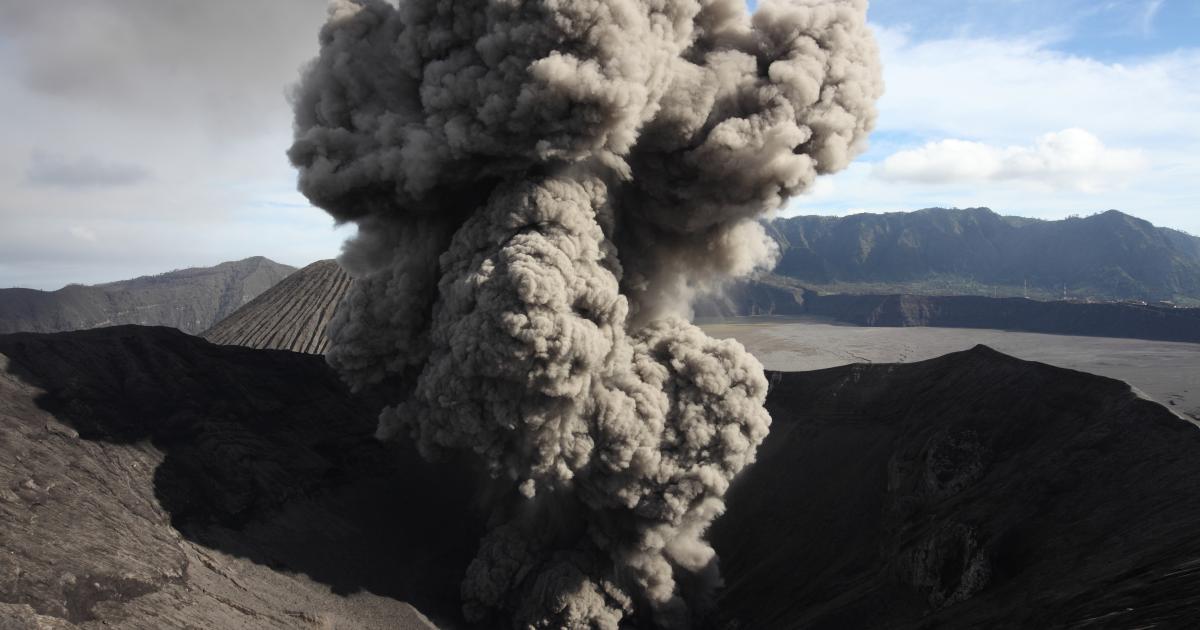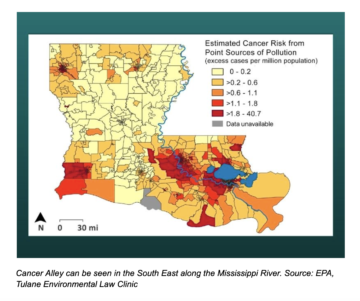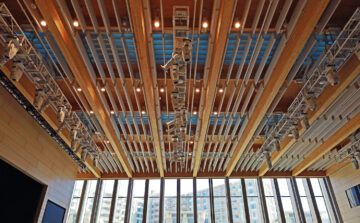
So do you remember in my previous article when I promised we’d dive into the controversies surrounding solar geoengineering? Well, you can officially stop holding your breath because today is that day.
But first, a quick refresh. Solar geoengineering, or solar radiation management (SRM), is a technique that seeks to reflect sunlight away from the Earth in a bid to cool the planet. But engineering the Earth’s atmosphere isn’t like switching over from gas to EV — the scale and impact necessary to make a difference is massive, making SRM a controversial and hotly debated technological “solution.”
It should be noted that much of the research below refers to stratospheric aerosol injection (SAI), or tiny particles of reflective sulfate injected into the atmosphere to deflect sunlight back into space.
Research is crucial
Like every other silver bullet technology we hope will solve our problems, SAI is laden with consequences.
Shuchi Talati, founder and executive director of The Alliance for Just Deliberation on Solar Geoengineering, explained to me that “the real [SAI] controversy is around research, and like, what type of research to do and where we’re prepared to draw the line.”
And when the foundational stage of R&D is not handled properly, the domino effect can be catastrophic.
An illustrative example of this is startup Make Sunsets. The company raised $750,000 in venture capital and released two balloons containing sulfur dioxide in Mexico earlier this year.
Speaking to me about the debacle, Talati was concerned with the startup’s research conduct being far outside the still developing standards and guidelines forming within academia. Such reckless regard for the scientific process, coupled with the blatant desire for profit, weakens the overall legitimacy of the field. “[Make Sunsets] didn’t even have a way to measure feedback or actually understand how to gather any sorts of data. It’s not experimentation; it’s provocation.”
In response to Make Sunsets’ stunt, the Mexican government drafted new laws prohibiting solar geoengineering.
A consensus on how to conduct large-scale research before the deployment of SAI technology has not been reached. “Almost all research right now has been model-based,” said Talati. A model can only go so far when it comes to demonstrating the impact of tampering with the Earth’s atmosphere.
The United Nations Environment Programme (UNEP) agrees. UNEP’s chief scientist Andrea Hinwood said, “There is very little evidence or research on the risks and impacts of SRM … for technologies that can alter the chemistry of the stratosphere, the world needs much more information to support decision-making.”
Politics at play
At its core, SRM is a tool of mitigation, described as masking the effects of climate change, not reversing them. SRM is meant to slow down the ever-increasing rate of impact and provide us the space to breathe and assemble a permanent solution.
But as climate change is felt more acutely, Talati and her peers worry about a rush to cool temperatures. “As climate impacts grow, as situations become more dire, I’m really concerned that we’re going to see a lot of shifting political demand around the world around solar geoengineering.”
A global group of more than 440 academics went so far as to form Solar Geoengineering Non-Use Agreement in January 2022, an organization founded around an initiative to stand against solar geoengineering in general. The scientists wrote and published an open letter against SRM, saying, “Speculative hopes about the future availability of solar geoengineering technologies threaten commitments to mitigation and can disincentivize governments, businesses and societies to do their utmost to achieve decarbonization or carbon neutrality as soon as possible.”
There’s also the terrifying potential of a country weaponizing SRM technology. A March 2022 report released by the Carnegie Climate Governance Initiative states that with the affordability of aerosol injection technology, “several nation-states may be motivated to be the first in pursuing the development and deployment of SRM unilaterally, without the cooperation of the rest of the world.” Hostile countries could alter the Earth’s temperature at a global level, affecting crop yields and access to food and water.
In its interview with the U.N., Hinwood said, “If SRM were to be unilaterally deployed by a rogue state or non-state actor, like a private company, it could introduce a series of new complex geopolitical or security threats.”
The fear of the worst-case-scenario outcome is the basis of much of the science community’s hesitancy to race to SRM as a global temporary solution.
And then there’s termination shock.
“The biggest physical risk [of SRM] is the risk of termination shock,” said University of Oxford physics professor Raymond Pierrehumbert to The Wall Street Journal, “which is the very rapid catastrophic warming that would occur if solar geoengineering was ever terminated abruptly.”
Lili Fuhr, a climate and energy expert at the Center for International Environmental Law, echoed that sentiment, telling The Guardian, “Termination shock terrifies me. This is just a gigantic gamble with the systems that sustain life on Earth.”
Funding and the future
So, given everything we’ve already discussed, who is funding SRM research, and, more important, who SHOULD be funding the research? As a journalist who often reports upon venture capital funding and innovative technology emerging from the private sector, I assumed the world of Silicon Valley and corporate investment were represented in SRM development.
“I really haven’t [seen corporate funding in SRM], which I think is a good thing,” Talati told me. “I don’t think for-profit has a place in solar geoengineering.” To date, there are no examples of large corporations funding SRM or developing their own technologies. Rather, most global funding derives from government grants and is concentrated within academia.
The overwhelming message I’m taking away from my research is that SRM is a controversial Band-Aid amid an ongoing global discussion about best research practices (not to mention the deluge of potential catastrophic impacts).
Instead, corporations and venture capital should focus on researching, developing and releasing equitable access to technology that adapts to and reverses the climate crisis. This includes everything from AI and satellite-powered wild fire and flood monitoring software to carbon-negative cement and infrastructure production to renewable energy derived from nuclear fusion. Each route demonstrate a stronger ROI for any investor — and a strong ROI for the Earth.
- SEO Powered Content & PR Distribution. Get Amplified Today.
- EVM Finance. Unified Interface for Decentralized Finance. Access Here.
- Quantum Media Group. IR/PR Amplified. Access Here.
- PlatoAiStream. Web3 Data Intelligence. Knowledge Amplified. Access Here.
- Source: https://www.greenbiz.com/article/inside-controversy-and-profitability-solar-geoengineering
- :has
- :is
- :not
- :where
- $UP
- 000
- 2022
- 7
- a
- About
- abruptly
- Academia
- academics
- access
- Achieve
- actually
- adapts
- affecting
- against
- AI
- All
- Alliance
- already
- also
- Amid
- an
- analysis
- and
- and infrastructure
- any
- ARE
- around
- article
- AS
- assumed
- At
- Atmosphere
- availability
- away
- back
- band-aid
- basis
- BE
- because
- become
- been
- before
- being
- below
- BEST
- bid
- Biggest
- Breath
- BREATHE
- businesses
- but
- by
- CAN
- capital
- carbon
- Carbon Neutrality
- catastrophic
- Center
- change
- chemistry
- chief
- Climate
- Climate change
- climate crisis
- comes
- commitments
- company
- complex
- Concentrated
- concerned
- Conduct
- Consensus
- Consequences
- controversial
- controversy
- Cool
- cooperation
- Core
- Corporate
- Corporations
- could
- countries
- country
- coupled
- crisis
- crop
- data
- Date
- day
- decarbonization
- Decision Making
- Demand
- demonstrate
- demonstrating
- deployed
- deployment
- Derived
- described
- developing
- Development
- difference
- dire
- Director
- discussed
- discussion
- do
- domino
- Dont
- down
- drafted
- draw
- each
- Earlier
- earth
- effect
- effects
- emerging
- energy
- Engineering
- Environment
- environmental
- equitable
- Ether (ETH)
- EV
- Even
- EVER
- ever-increasing
- Every
- everything
- evidence
- example
- examples
- executive
- Executive Director
- expert
- explained
- far
- fear
- feedback
- field
- Fire
- First
- flood
- Focus
- food
- For
- form
- Founded
- founder
- Free
- from
- funding
- future
- Gamble
- GAS
- gather
- General
- geopolitical
- given
- Global
- Go
- going
- good
- governance
- Government
- Governments
- grants
- great
- Group
- Grow
- guardian
- guidelines
- handled
- Have
- her
- hesitancy
- holding
- hope
- hopes
- How
- How To
- http
- HTTPS
- i
- if
- Impact
- Impacts
- important
- in
- includes
- information
- Infrastructure
- Initiative
- Innovation
- innovative
- innovative technology
- International
- Interview
- into
- introduce
- investment
- investor
- IT
- ITS
- January
- journal
- journalist
- jpg
- just
- large
- large-scale
- Law
- Laws
- legitimacy
- Level
- Life
- like
- Line
- little
- Lot
- make
- Making
- management
- massive
- May..
- meant
- measure
- message
- mitigation
- model
- monitoring
- more
- most
- motivated
- much
- my
- Nations
- necessary
- needs
- New
- Newsletter
- no
- node
- noted
- now
- occur
- of
- Officially
- often
- on
- ongoing
- only
- open
- or
- organization
- Other
- our
- Outcome
- outside
- over
- overall
- own
- Oxford
- permanent
- physical
- Physics
- Place
- planet
- plato
- Plato Data Intelligence
- PlatoData
- political
- possible
- potential
- practices
- prepared
- private
- private sector
- problems
- process
- Production
- Professor
- Profit
- profitability
- programme
- promised
- properly
- provide
- published
- Quick
- R&D
- Race
- Radiation
- raised
- rapid
- Rate
- rather
- reached
- real
- really
- reckless
- refers
- reflect
- regard
- released
- releasing
- remember
- Renewable
- renewable energy
- Reports
- represented
- research
- REST
- right
- Risk
- risks
- ROI
- Route
- rush
- s
- Said
- saying
- Scale
- Science
- scientific
- Scientist
- scientists
- sector
- security
- Security threats
- see
- Seeks
- seen
- sentiment
- Series
- several
- SHIFTING
- should
- sign
- Silicon
- Silicon Valley
- Silver
- situations
- slow
- So
- so Far
- Software
- solar
- solution
- SOLVE
- Soon
- Space
- speculative
- SRM
- Stage
- stand
- standards
- startup
- State
- States
- Still
- Stop
- stratosphere
- street
- strong
- stronger
- such
- sunlight
- support
- Surrounding
- Systems
- taking
- tech
- technological
- Technologies
- Technology
- temporary
- than
- that
- The
- The Future
- The Guardian
- The Wall Street Journal
- the world
- their
- Them
- then
- There.
- thing
- Think
- this
- this year
- threaten
- threats
- to
- today
- tool
- two
- type
- understand
- United
- united nations
- university
- University of Oxford
- upon
- us
- Valley
- venture
- venture capital
- Venture Capital Funding
- very
- Wall
- Wall Street
- Wall Street Journal
- want
- was
- Water
- Way..
- we
- WELL
- went
- were
- What
- when
- which
- WHO
- Wild
- will
- with
- within
- without
- world
- worry
- would
- year
- yields
- you
- Your
- zephyrnet








